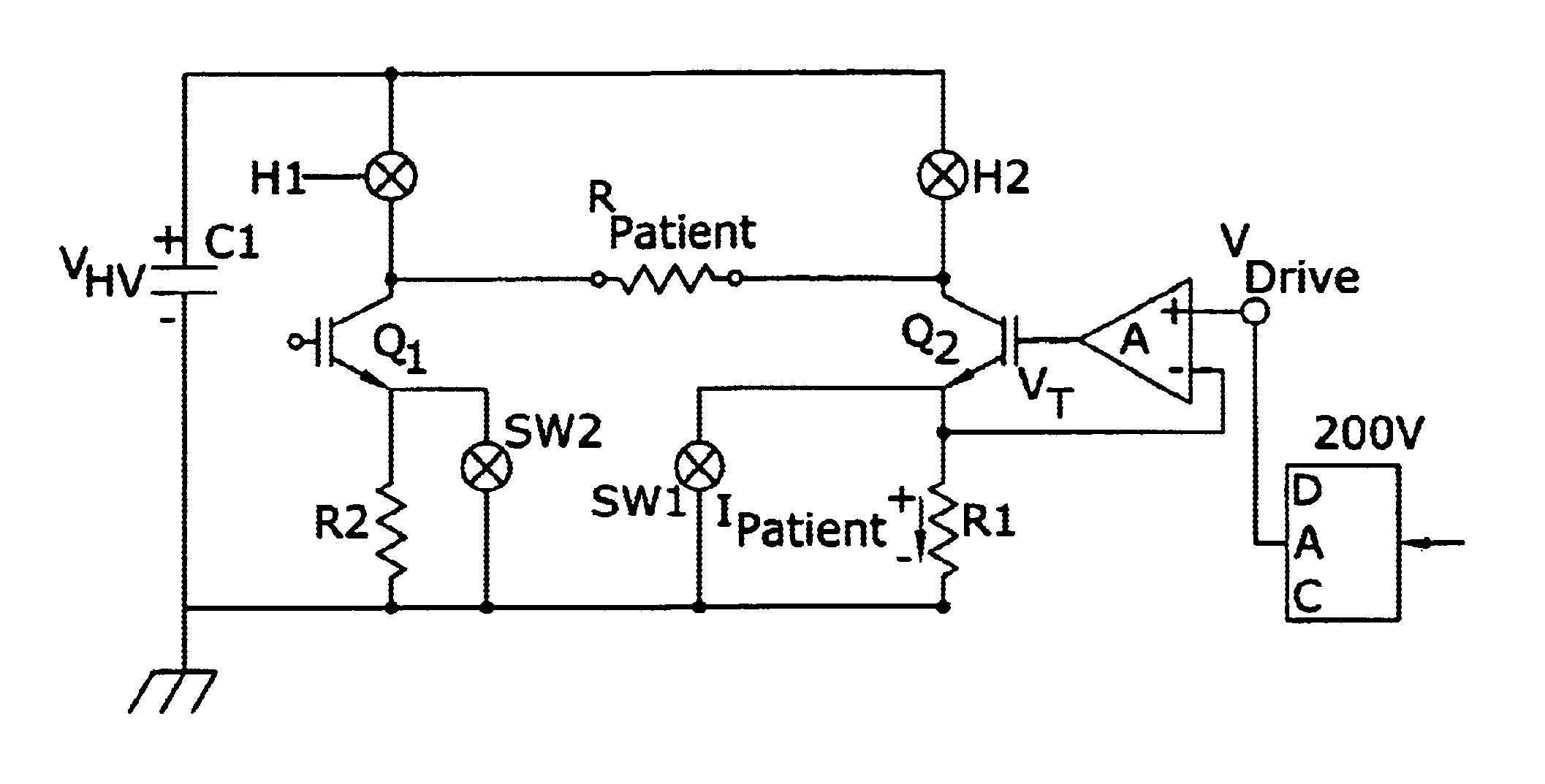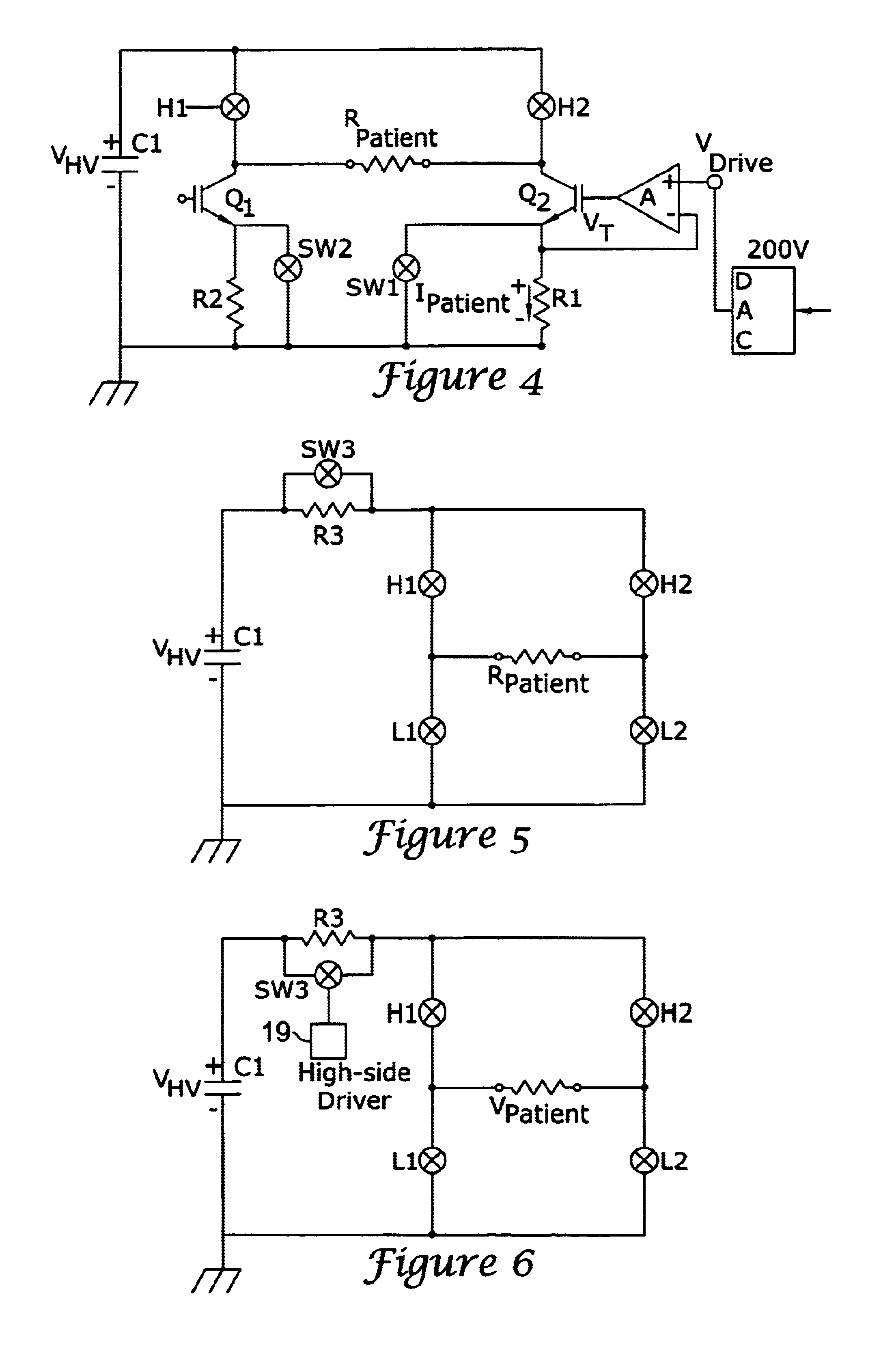Defibrillation pacing circuitry
a technology of pacing circuit and defibrillation, which is applied in the direction of heart stimulators, therapy, heart defibrillators, etc., can solve the problems of not having a practical use, system is far more complicated to use, and has never been used
- Summary
- Abstract
- Description
- Claims
- Application Information
AI Technical Summary
Benefits of technology
Problems solved by technology
Method used
Image
Examples
Embodiment Construction
[0022]FIG. 1 illustrates a conventional “H-bridge” defibrillator circuit 11. The circuit 11 includes a capacitor C1 which is charged to a high voltage VHV and four switches H1, H2, L1, L2. The capacitor C1 and switches H1, H2, L1, L2 are used to create either a monophasic voltage pulse or a biphasic voltage pulse (FIG. 2) across a patient represented by resistance RPATIENT. In various applications, the switches H1, H2, L1, L2, may be MOSFETs, IGBTs, or SCRs (silicon controlled rectifiers).
[0023]To create a biphasic waveform such as that shown in FIG. 2, a first pair of switches, e.g., H1 and L2, may be closed to create a positive pulse 13. Then all of the switches, H1, H2, L1, L2, are turned off during a “center pulse” delay period 15. At the end of the delay period 15, the switches H2 and L1 are both closed, thereby reversing the current through the patient RPATIENT to produce a negative voltage pulse 17. Typically, digital logic is employed to control the sequencing of the switche...
PUM
 Login to View More
Login to View More Abstract
Description
Claims
Application Information
 Login to View More
Login to View More - R&D
- Intellectual Property
- Life Sciences
- Materials
- Tech Scout
- Unparalleled Data Quality
- Higher Quality Content
- 60% Fewer Hallucinations
Browse by: Latest US Patents, China's latest patents, Technical Efficacy Thesaurus, Application Domain, Technology Topic, Popular Technical Reports.
© 2025 PatSnap. All rights reserved.Legal|Privacy policy|Modern Slavery Act Transparency Statement|Sitemap|About US| Contact US: help@patsnap.com



